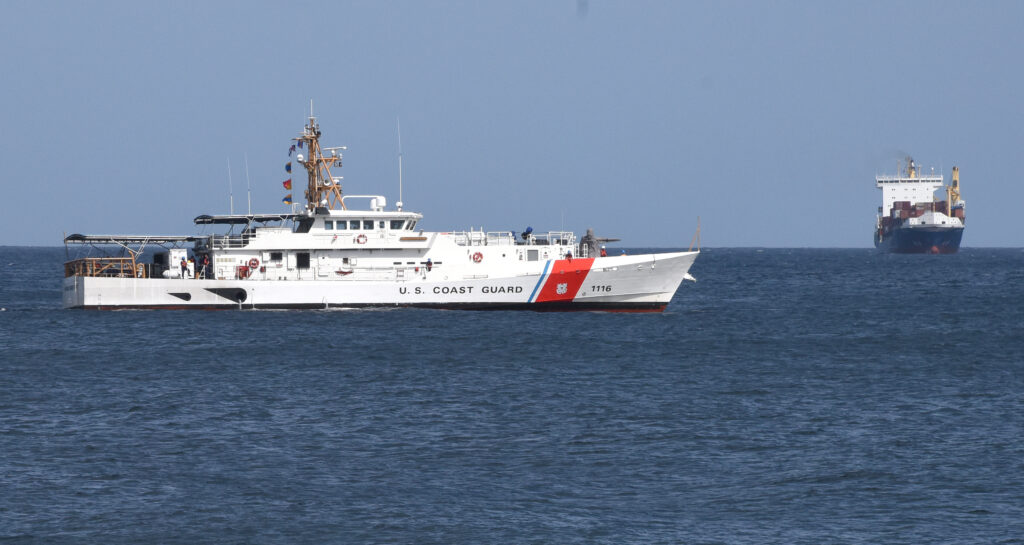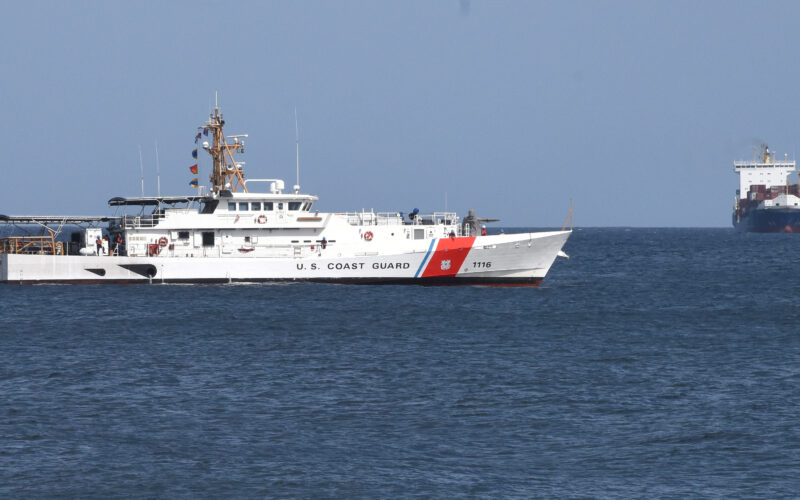(WASHINGTON) — Coast Guard mission demands are growing while the service faces a significant workforce shortage. The Coast Guard is short nearly 10 percent of the entire enlisted workforce and cannot continue to operate as it has historically with fewer people.
To mitigate the workforce challenge risk in a deliberative and strategic fashion, Vice Commandant Adm. Steven Poulin has provided specific temporary operational guidance to adapt operations while prioritizing lifesaving missions, national security and protection of the Marine Transportation System. There will be no loss of search and rescue (SAR) capabilities.
The commandant, Adm. Linda Fagan, and Heath Jones, master chief petty officer, have emailed the workforce to outline the service’s mitigation strategy.
“The Coast Guard cannot maintain the same level of operations with our current shortfall – we cannot do the same with less. Conducting our missions is often inherently dangerous, and doing so without enough crew puts our members and the American public at increased risk,” wrote Fagan and Jones.
What does this mean for you?
The commandant has given assignment officers unprecedented flexibility this assignment season to work with members impacted by these force alignment changes.
Enlisted personnel management (EPM) and officer personnel management (OPM) staff started visiting the impacted units last week. They’ll answer questions and address members’ individual concerns. Some visits will be in person, others virtual.

“We understand the extra stress and anxiety these unforeseen changes create for our members and their families,” said Rear Adm. Rusty Dash, commander of the Personnel Service Center. “EPM and OPM will directly engage with each affected command to discuss individual situations and concerns.”
EPM’s priority is to assign affected members to the same geographic area (if possible and if that is what the member desires) while keeping their original tour completion dates. If that’s not possible, EPM will increase the member’s assignment priority and reassign the member based on their desire and service needs.
OPM will offer officers one-on-one counseling prior to eResume submission. OPM will work to tailor assignments to best meet officers’ professional and personal needs. You can access the AY 2024 Force Alignment Initiative SharePoint site for full details.
Detailed changes
As cutter crews are not scalable, the only way to reduce the workforce of the cutter fleet is to reduce the number of operating cutters. Previously planned cutter decommissionings will continue, including the Coast Guard cutter Steadfast.
Some cutters will be placed in a special status awaiting either decommissioning or future reactivation. In some cases, the crews will do a hull swap to layup the cutter with the largest pending maintenance requirement. Some of the changes include:
• Three 210-foot medium endurance cutters (WMEC) will be placed in layup, pending decommissioning.
• Seven 87-foot patrol boats will be placed in layup, pending reactivation.
• Five 65-foot harbor tugs will temporarily not be continuously manned but will be kept in a ready status in case icebreaking is needed.
• Two 154-foot patrol crafts will commence uncrewed for the Recurring Depot Availability Program (RDAP) at the Coast Guard Yard in Baltimore, Md. The next 154-foot patrol craft scheduled for RDAP will deliver the hull to the Coast Guard yard and swap hulls with a cutter that has completed dry dock.
Shoreside changes are also necessary. There are 44 stations and 36 aids to navigation teams (ANTs) that currently have more billets than their staffing standards allow in the activity-based staffing model. The stations will be reduced to their staffing standards and the ANTs to one billet below their staffing standards. Other shoreside changes include, but are not limited to:
• Crews at all 23 seasonal station smalls will transfer to their parent command.
• The six non-response units (boat forces units without SAR responsibilities) will suspend operations and their crews will be reassigned in assignment year (AY) 2024.
• The identified 19 stations whose SAR response capabilities are redundant will be deemed Scheduled Mission Units. Three of these 19 stations will be ports, waterways and coastal security level one Scheduled Mission Units.
What’s next?
These risk-based adjustments for AY 2024 will mitigate the shortage, but the service will still have some gapped positions. More mitigation efforts may be needed as it continues to evaluate service readiness. This strategic approach to temporarily adjust operations will best position the Coast Guard for future operational capabilities.
And the future is coming quickly. The first offshore patrol cutter, Argus, was launched in late October.
“The ‘Trackline to 10,000,’ to have 10,000 members assigned to afloat units, is still the goal for our future fleet and we will get there,” said Capt. John Driscoll, the chief of the Office of Cutter Forces. “We need to adjust our operating capacity now so we can prepare for the future. We will gradually grow fleet capacity back through continued construction of ships with the latest technology and the best crew habitability. Our cutter fleet is in demand globally, and I can see our cuttermen continuing to explore new locations as our ship operations are dedicated to the highest priority missions.”
– U.S. Coast Guard

